THE COST OF RACING: RX-8 CUP
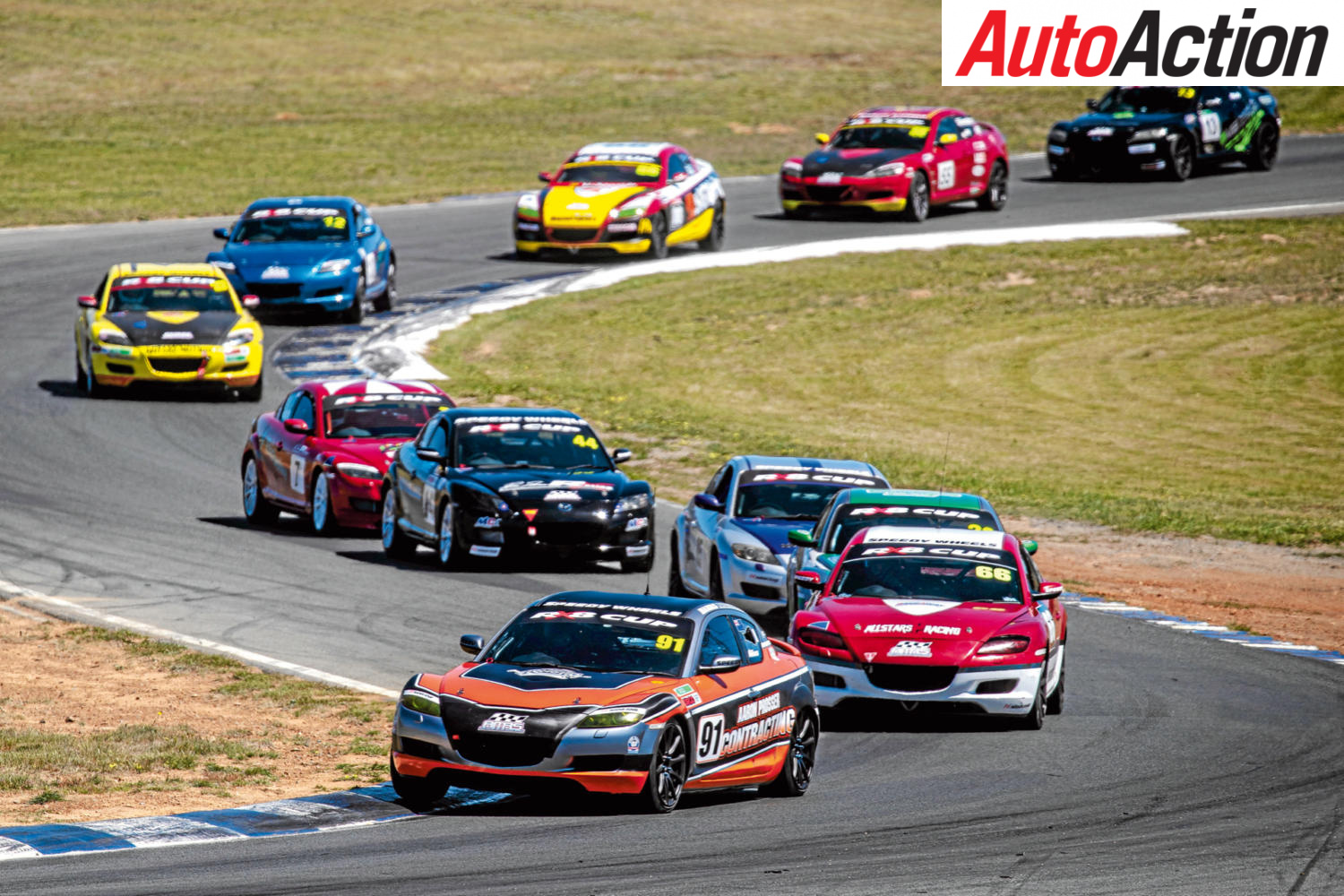
Since its introduction onto the Australian Motor Racing Series calendar in 2018, the one-make Mazda RX-8 Cup has rapidly built a solid following in what is a crowded motorsport marketplace.
Heath McAlpine investigates how cost-effective this series is and why its popularity continues to grow.

A conversation between co-drivers during the Bathurst 6 Hour spawned the concept of RX-8 Cup, a class that has experienced steady growth over the course of its inaugural three seasons.
The man behind the series is noted production car racer and rotary specialist Ric Shaw, who was determined to provide an accessible option to get into motorsport.
“After a 37-year career in motorsport spanning whatever I’ve done, I just decided in some respects that it was time to give something back to the sport,” explained Shaw.
“I’m fairly strong on the idea of giving something back to the sport for the guys, who want to start motor racing that don’t currently race, so it’s orientated around grassroots at the beginner-type level.
“It’s for competitors that want to race easily and affordably at a level that’s not rocket science. Easy to build a car, easy to maintain, easy to run, you don’t need a transporter, no need for a cast of thousands to specially run it.
“That’s the incentives I had towards it.”
And from all reports, RX-8 Cup achieves those goals. Shaw’s development started with devising a control parts package in mid-2017, similar to the formula used in the Toyota 86 Race Series, but remaining very much production car based.
With the initial package decided, the first RX-8s hit the track in 2018 as part of the Australian Motor Racing Series where competitors have competed at circuits including Winton and The Bend Motorsport Park.
The category is aimed at beginners, but also experienced competitors continue to join the series, some have even used the class to return to motorsport after a long hiatus. Enter former production car frontrunner of the early-1990s, Terry Lewis.
RX-8 Cup caters to both national and state-based competitors through the AMRS with entry fees hitting the $1000 mark, which includes a garage and Friday practice.
A weekend encompasses four or five practice sessions, qualifying and four races. While plans for next year are not set in stone, it is envisioned RX-8 Cup will conduct a six-round national series, plus four-round state component.
The category employs four-staff, including its own scrutineers to police the strict rules put in place by the regulations.
To get involved in the series there are a variety of pathways. One is to acquire and build a Series I RX-8 (2003-2007) into a race car, another is to purchase second-hand and finally leasing one is also a possibility.
A road-going RX-8 can be bought for anywhere between $2000-$7000 depending on its condition. To convert the platform to RX-8 Cup specification can cost as low as $12,000 or top end builds can reach $35,000. Any more than that and Shaw says it’s a waste of money.
“Guys are building RX-8s from go-to-woe, $20,000 for a brand new car,” Shaw told Auto Action.
“It depends how much you buy the car for, whether it’s $2000 or $5000 and then our control package is $4100.
“The cheapest RX-8 to be put on the grid cost around $12,000, but realistically, a well-built car that I could do competitive lap times in costs around $20,000.
“If some guy – and this goes for any category – starts with a shell, strips it, puts it on a rotisserie, sandblasts it, builds it from there with new nuts and bolts on the thing, yeah sure he could spend $50,000, but it would be a waste of money.
“I think the most someone’s spent to build a car is $30,000, because they’ve rebuilt the motor and the gearbox with everything new. Did it go any faster? No.
“When you look across the board, most people have got a very cost effective, well-built, reliable car on-track for $20,000.”
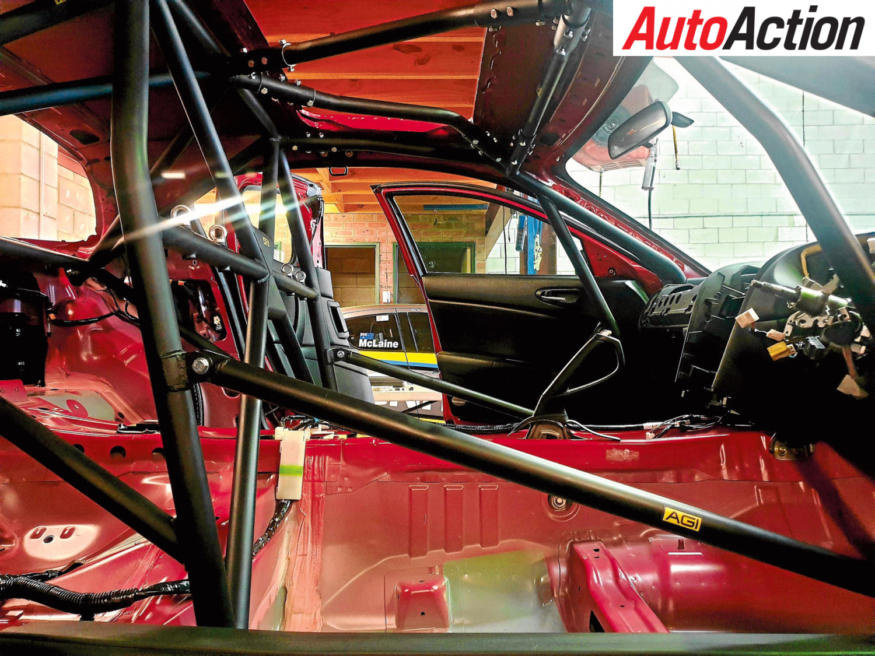
The roll cage is not controlled, but must meet Motorsport Australia National specifications, though most competitors use a bolt-in unit that can be installed at their home for $4000.
Next, a RX-8 Cup control kit is needed to complete the transformation, which is purchased directly through Shaw.
At a cost of $4100, the kit comprises an MCA suspension package including springs and shocks, a Ric Shaw Performance exhaust system, a set of 18 x 8 Speedy Wheels rims including open wheel nuts, a set of Nankang A1 tyres, Circo brake pads and a category supplied air intake utilising a K&N filter.
Shaw designed the kit to not only be cost-effective, but easy to install limiting the requirement for professional help.
“I think 99 percent of the cars on the grid have been built at home,” explained Shaw.
“Everything that bolts on is all off the shelf, really, really easy provided you have some mechanical ability, you can do that.
“You don’t need to come to me or another mechanical workshop and ask us to build you a car, you could build one yourself if you wanted to.”
Although, keeping costs low was a high priority, it didn’t compromise on the quality of the product as Shaw researched and tested the concept to achieve the desired result.
“I didn’t want the cars to be super, super cheap, but horrible to drive because they were on an unsuitable tyre, I didn’t want that,” said Shaw.
“I wanted them to be pretty good to drive, quite rewarding to drive and to feel like they cost more than they already do.
“We’ve sort of achieved that and that’s what everyone says, the package is good and they’re surprisingly good to drive for the little money to get it that good.”
Getting the components is also an easy process with Shaw maintaining a large inventory.
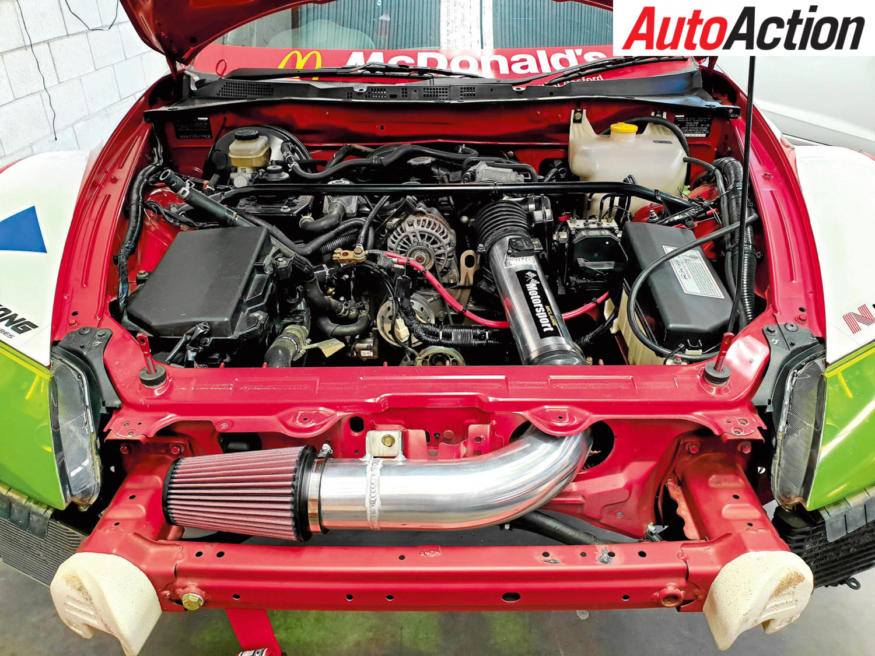
“We have a supply chain of absolutely everything,” Shaw said.
“If someone comes to me who is building a car, we can supply him 100 percent of every component they need right down to bonnet pins at a competitor price. We have a discount on everything, right down to lithium batteries, seat mounts, isolator switch mounts, we have everything that is customised for an RX-8.
“As soon as they’re a part of the category and they’re building a car, they are entitled to those discounts.”
Extra items that can be fitted include an improved clutch plate developed by Direct Clutch in Queensland, a category bespoke PWR radiator, suspension bushes, stock brake rotors are commonly replaced with DBA 4000 Series, adhering to the same size as the original component.
“Where the rules allow freedoms is either it’s a needed safety item or to make it reliable and motorsport savvy,” emphasised Shaw.
“There’s still enough to adjust and tune, ride height, shock settings, wheel alignment and tyre pressures without having too much. It’s enough for the average first-timer to get their head around and play with.
“The RX-8s less modified than a 3E production car because those are allowed to modify the brakes, we’re not and certainly we can’t touch the engines in any way or the engine management in any way.”
Speaking of engines, the famous Mazda Rotary is a reliable base for the category and maintaining it during the season is trouble free.
“The requirements of servicing are low, it’s not like a piston engine, there are no timing belts or valves to adjust,” Shaw explained. “You pretty much don’t have to do anything to them other than servicing the ignition system, like changing spark plugs, changing oil and filters. It’s really simple basic servicing stuff that gets done.
“It is dependent on the competitor, some spend a little more time polishing things, but some guys are rather lax and do little more than change the engine oil. They are quite maintenance free, so very light, general servicing, bleeding brakes, changing engine oils, maybe checking wheel alignment and a good clean is all that it probably needs.”
One item the RX-8 Cup is very stringent on is appearance in its aim to uphold a professional standard, although still an entry-level class. Also, each competitor must have an A-Board providing information on their career, car history and sponsors.
Driving standards is also a key focus as well, with improvements made each meeting and a category driving standards officer installed on most race weekends.
As aforementioned, in-house scrutineers are also employed at meetings to make sure all entries conform to the regulations.
“We’ve got our own in-house technical scrutineers,” Shaw said. “The sole job for them is to be with us and to check the technical requirements of the cars. Whether it’s weighing cars, checking ride heights, marking tyres or checking engine seals, diff ratios and just looking at all the different things.”
But how have competitors found the class?
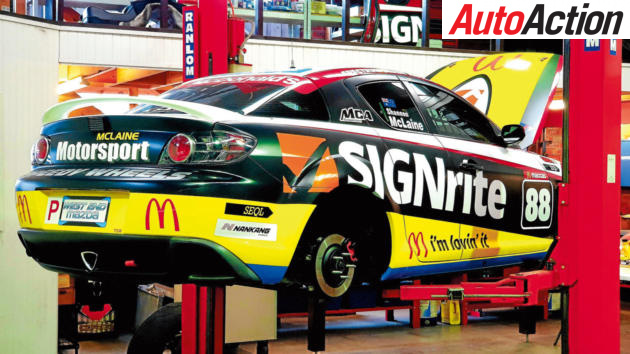
Steve McLaine was one of the first converts to RX-8 Cup in 2018 and has built two-cars, one at each end of the price spectrum. McLaine and his son Shannon form one of the many father-son combinations in the field.
“The first car I bought was for $2500 as a road-registered car and I ran that motor at its first meeting, so that car cost me $17,000 to build,” McLaine said.
“I left the motor, gearbox, diff, it didn’t have all the offset bushes in the suspension, it was a very basic race car.
“This car I have now, I went the other way. This one cost me $32,000 to build, I paid $4000 for an immaculate one owner, which was way too good to turn into a race car, but I just wanted a good base.
“It owed me $32,000 when I’d finished, but that was a rebuilt motor, rebuilt gearbox, rebuilt diff, new driveshafts, new wheel bearings, everything in the car was brand new to start with.”
Preparation for the McLaines is comprehensive.
“Three-four days before every meeting, it’s on the hoist and the car is stripped, the suspension comes out of it, it’s fully nut and bolted, all the oils get changed, all the fluids – as in brake fluid – gets changed, wheel aligned, gearbox gets rotated every meeting,” McLaine detailed.
The budgets McLaine adheres to are approximately $2000-$2500 per local round at Sydney Motorsport Park and $4000 for interstate meetings, which includes accommodation and transport.
This works out to be a season budget of $20,000.
McLaine did highlight one weakness, the gearbox. This can be encountered through drivers flat changing, but if this is avoided a gearbox can last a full-season.
“Gearboxes are probably the biggest weak point of the car,” McLaine admitted.
“If you drive them sensibly, your gearbox lasts for a whole season, but the way they’re driving at the front now, they’re smashing gears so hard and if you want to compete with these guys, you’ve got to drive the same as they do.”
McLaine also complemented Shaw on his approachability in providing advice to all competitors.
“What we’ve learnt over the past three years running the series and what the cars are like, Ric passes that on,” McLaine said. “Competitors building new cars from scratch can have a good RX-8 out of the box. We’re not testing things anymore, we know what works on them.
“Ric’s pretty hands on and gives every competitor the same advice.”
Justin Barnes recently joined the category as a lifelong fan of the Rotary engine and has emerged as a series frontrunner, winning rounds this season.
Barnes handles everything himself, he built his RX-8 at home in the garage, the preparation and transportation as a ‘one-man-band’.
Purchasing his RX-8 for $7000, it took Barnes five-weeks to build his weapon and found the whole process very simple.
“Extremely easy,” Barnes summed up. “Ric can supply all the bits that you need to build the car. The components are all bolt-on bits, all replacement items so they all fit quite easily.
“The best thing about it is there is only one of everything, there’s no variations. It’s one suspension package, one tyre, one brake pad, it’s controlled and it makes for an even playing field.”
He admitted to throwing new tyres on at every meeting with the Nankangs costing $800 a set or $200 a tyre. Although some competitors can go through a season on a set of tyres, as although there is an initial drop off, the Nankangs remain constant afterward.
No modifications (buffing) can be made to the tyres, however cleaning can be completed with a glove.
The Circo brake pads last four to five meetings at the rear and three at the front, changing a set costs $440.
Barnes is another to use the DBA 4000 Series rotors, which can be purchased for $200 for the rears and $250-$300 at the front. Also, Barnes has invested in a second oil cooler as advised by Shaw and suspension bushes at a cost of $500-$600.
The racing clutch plate installed hasn’t been a problem for Barnes, who remains on a strict budget. He brings his own fuel to the track, which will change as the category is expected to use Race Fuels as a control fuel supplier and estimates he uses 80-litres a race meeting.
Oil change occurs after every two meetings, but does need to be topped up during a weekend. Barnes also stated that he hardly touches the gearbox or diff oils, just general checks during servicing.
Engines are sealed by the category, a replacement unit costs $8000 with the ECU locked and a gearbox is $2500.
Another competitor is Jake Lougher, who bought an RX-8 direct from Shaw for $20,000 and is enthusiastic about the series.
“Value for money, I think it’s a really great entry level class that is very competitive and I thoroughly enjoy it because there’s not much that you can do to the car to make them go that little bit more,” Lougher said.
“It’s all about the driver to try and get as much out of the car as you can.”
Competitors receive 25 percent of OEM parts through Mazda, but Lougher explained a donor car is a handy investment as well and is handy when wanting to build a new machine.
“When you go to buy replacement parts, it’s cheaper to buy a doner car rather than a guard, which might cost you $300, but a whole spare car may cost $1500,” he explained. “So, we’ve got a vast array RX-8s in the garage, one of which might be built into a new car for next year.”
A GoPro is also required at a cost of $400 to Lougher, while he purchased a radio for $1500, though it isn’t mandatory for the class.
Although the motorsport marketplace is a crowded one, categories that were once seen as cheap and cheerful are quickly becoming the opposite.
Through the controls put in place, the RX-8 Cup won’t meet the same fate and provides an easy and accessible entry into motorsport.
COST GUIDE
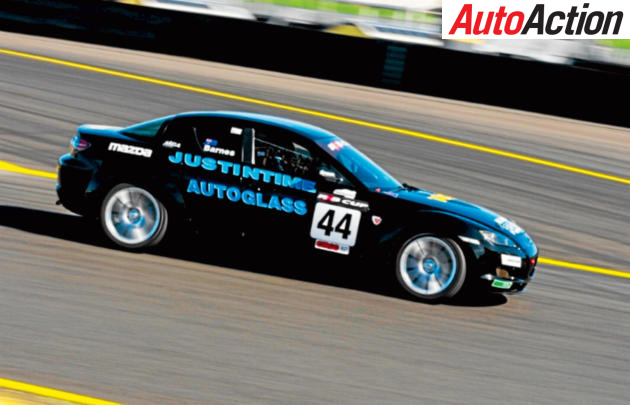
ENTRY FEES
$1000 per round (includes garage and Friday practice)
NEW DIY CAR BUILD
$12,000-$32,000
NEW CAR PURCHASE
From $20,000
LEASE
$3000 per round
RX-8 CUP KIT
$4100 (includes: set of 18×8 Speedy Wheels rims and open wheel nuts, a set of Nankang AR1 tyres, Circo S99 front brake pads, Circo S83 rear brake pads, Ric Shaw Performance exhaust system, MCA springs and shocks, air intake).
EXTRAS
DBA 4000 Series front $200, rear $250-$300
PWR radiator $1000
Clutch plate Direct Clutch $1000
Oil cooler S-Sport supplied complete kit $450
TYRES
Nankang $800 a set, $200 each
BRAKES
Pads $220
Rotors $200-250
SIX ROUND – NATIONAL SEASON BUDGETS
Approximately $20,000, including interstate meetings.
WANT A TASTE?
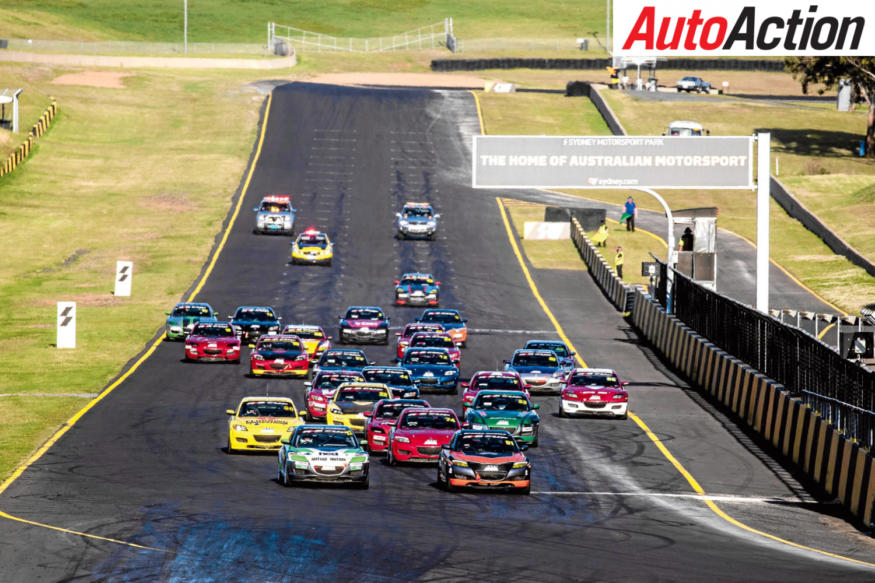
Competitor Sam Silvestro supplies many components that form part of the Mazda RX-8 Cup package, but has now branched out into offering arrive and drive packages.
Through his S-Sport business, Silvestro offers a variety of levels catered to a client’s needs whether that be providing partial track support or a bring your helmet and drive deal.
“We offer pretty economical packages tailored to what somebody wants, whether they want to turn up and drive, then leave afterwards or if they want to pitch in and tow the car to the race track,” said Silvestro.
“Some of those guys have gone on to build cars, absolutely. They used me as a toe in the water and they went on to build cars like Adam Spence and Matt Butters.”
Silvestro estimated a fully-supported package at Sydney Motorsport Park to cost $3000 for the weekend, which includes a crew member and the right spares to finish the weekend.
S-Sport also supply a bundle of safety components including steering wheels, seat, seat mounts, isolator switch bracket, window nets and fire extinguisher at an estimated cost of between $2000-3000.


